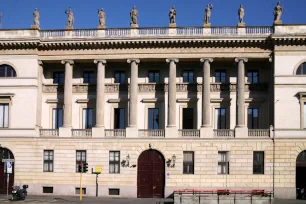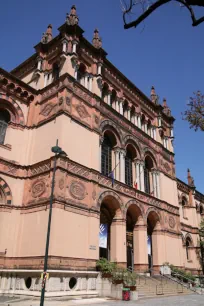The Corso Venezia is one of Milan’s most prestigious streets, bordered by stately buildings in a multitude of architectural styles, from Renaissance to Art Nouveau. Many upscale shops have outlets here.

The Corso Venezia is about one kilometer (0.6 miles) long and runs north from Piazza San Babila to Porta Venezia.
History
Before the mid-eighteenth century this area of Milan was sparsely built, with mainly gardens, orchards and even a hunting ground.
During the reign of Maria Theresa of Austria, Milan’s economy prospered, and the upper class started to build large palazzi (palaces) along Corso Venezia. At the time, the street was known as Corso di Porta Orientale, after the gate that was built here in the city wall.
Corso Venezia is now one of Milan’s most attractive streets, and a must-visit for fashion aficionados as well as architecture buffs. The street is also bordered by the Giardini Pubblici, one of the few public parks in the center of Milan.
Sights
San Babila

Starting from piazza San Babila, the first notable building is the San Babila church. A basilica was built here as early as in the fourth century at the site of a Roman temple. The church’s present-day appearance dates from the nineteenth century; the front facade is even more recent and was added in the early twentieth century.
In front of the church stands a tall pillar topped with a lion statue. Legend had it that the lion statue, a symbol of Venice, was stolen from the Venetians.
Casa Fontana-Silvestri

One of the most beautiful houses on Corso Venezia is the Casa Fontana-Silvestri, originally built in the twelfth century. Its current appearance, with a Renaissance facade attributed to Donato Bramante, dates from the fifteenth century. It is one of the few remaining Renaissance buildings in Milan.


Seminario Arcivescovile
Across the street from the Casa Fontana-Silvestri stands the Seminario Arcivescovile, a seminary commissioned in 1560 by Saint Charles Borromeo. It was built in 1565 by Vincenzo Seregni. The portal, decorated with a tympanum and statues, was added in 1652 by Francisco Maria Richini.
Palazzo Serbelloni
One of the largest buildings along Corso Venezia is the Palazzo Serbelloni, originally built in the fifteenth century but reconstructed at the end of the eighteenth century after a design by the Swiss-Italian architect Simone Cantoni. The facade is dominated by a central loggia surmounted by an imposing neoclassical portico.
Palazzo Castiglioni


This palazzo was built in 1904 for a wealthy local businessman, Ermenegildo Castiglioni. It is designed in Art Nouveau Style – locally known as Liberty Style – a style very much en vogue during the early twentieth century. The facade is decorated with flower motifs, typical for Art Nouveau. The basement’s exterior has rough unfinished stones, which symbolize the rugged nature.
Palazzo Rocca-Saporiti
The whimsical facade of the early twentieth century Palazzo Castiglioni contrasts with the neoclassical facade of the nineteenth century Palazzo Rocca-Saporiti across the street.
This palazzo was commissioned in 1800 by Gaetano Belloni. It was built in 1812, during the Napoleonic era, after a design by Giovanni Perego, who decorated the facade with Ionic columns and a frieze depicting the history of Milan. The statues on top of the balustrade depict the ‘Dii Consentes’, the twelve most important Roman deities.

Giardini Pubblici
Between Via Palestro and Porta Venezia, Corso Venezia is bordered by the Giardini Pubblici, Milan’s largest city park. It was first laid out in 1786 and later expanded. There are plenty of monuments and buildings in the park, including the Museo di Storio Naturale (Museum of Natural History) and the Planetarium, both facing Corso Venezia.
Porta Venezia

Corso Venezia ends at Porta Venezia, a large, traffic-heavy square that was once the site of the Spanish gate. The gate was built by the Spanish in the sixteenth century during the construction of the new city walls.
The two buildings at the center of the square formed the main part of the gate, which was rebuilt in 1828 in the Neoclassical style. The rectangular structures are decorated with statues, columns and reliefs that depict scenes from the history of Milan.

